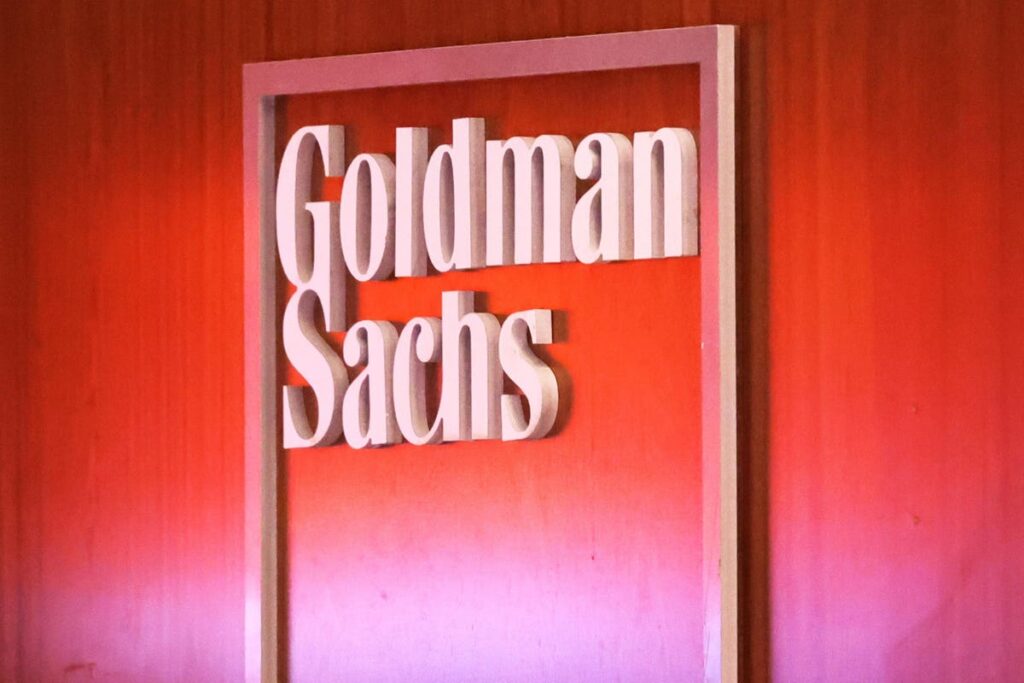Key takeaways
- Goldman Sachs has cut 30 roles in its Asia investment banking division, with rumors swirling of hundreds more job losses coming
- Goldman Sachs shares are up 1.59% this working week
- The move comes as M&A activity remains down, though top banking bosses say signs of life are emerging again
Banking behemoth Goldman Sachs is slashing its Asia investment banking headcount, eliminating over 30 regional roles thanks to the uncertain economic climate. It becomes the latest of many big banks to reduce its investment banking arms in the region as sluggish M&A activity, an uncertain economic outlook and escalating geopolitical tensions leave the sector with few options.
Goldman’s share price rose slightly at the news, signaling Wall Street approves of its continued cost-cutting measures. Not to mention banking bosses believe the worst of the layoffs are over and that deal activity will eventually pick up. We’ve got the rundown below.
Sticky inflation has been the root cause of the Fed hiking interest rates, leaving businesses and households struggling. But it doesn’t need to be the same for your portfolio with Q.ai’s Inflation Protection Kit.
It harnesses an AI algorithm to predict the best-performing inflation-busting assets like TIPS, commodities and precious metals for you to invest in. From there, the AI weights the Kit’s holdings as needed to help you grow your returns in a tricky economic environment.
Download Q.ai today for access to AI-powered investment strategies.
What has Goldman Sachs confirmed?
Goldman Sachs is laying off 30 people in Asia, with the Global Banking & Markets division suffering most of the cuts. The Beijing and Hong Kong offices had the biggest losses, with nine capital markets bankers losing their jobs along with the managing director.
The move is part of a rumored broader layoffs round that could affect up to 250 senior roles at Goldman Sachs, making it the bank’s third layoffs round in 12 months. Earlier this year, it conducted a massive 3,200-strong layoff round across several departments, and late last year, it eliminated 500 positions. In February, the bank detailed its plans to make $1 billion in savings this year.
It’s been a tricky time for the investment bank, which missed its revenue targets in Q1. Earnings fell 18% to $3.23 billion, while its investment banking activity plunged 26% from the year earlier to $1.58 billion. Global revenue dropped 5% for the quarter to $12.22 billion.
Goldman is also said to be accelerating its cost-cutting measures, with performance-based eliminations in September not off the table and expense management being the main focus. A Goldman Sachs spokesperson said the bank is “delivering on the $1 billion plan we laid out at investor day to drive efficiencies and deliver for shareholders”.
Are any other banks making layoffs?
Goldman Sachs’ is one of many banks to take a closer look at the profitability of its Asian investment banking division. Morgan Stanley
MS
Citigroup
C
Finally, the Bank of America
BAC
The market reaction
Wall Street reacted well to the news of the layoffs: Goldman Sachs’ share price has risen 1.59% this working week, with a small 0.3% boost in pre-trading on Friday. There may be some clouds on the horizon for the stock as Goldman’s commercial real estate loan delinquencies have surged, with the value of loans to commercial real estate borrowers that have fallen behind on payments soaring 612% in Q1 to hit $840 million.
It’s also facing questions over its role in Silicon Valley Bank’s collapse in March. U.S. Justice Department prosecutors are said to have been in touch with the bank after its role in SVB
VB
Goldman Sachs spokespeople have said the bank fully cooperates with the investigation, but negative headlines could affect the share price in the coming months.
Will dealmaking activity pick up?
After the dismal economic outlook put many plans on ice – Dealogic data puts Q2’s M&A activity down 46% from the previous year – the IPO market shows signs of life. Both Goldman Sachs’ CEO David Solomon and Morgan Stanley’s CEO James Gorman have recently indicated that they believe the worst is now over. Solomon told CNBC that he expects capital markets activity to pick up by 2024 and that there had been “green shoots” of activity.
A report from Renaissance Capital found in 2023, there have been 44 IPOs in the US, raising $7.3 billion. Compared to last year, when 71 IPOs raised $7.7 billion, it’s good to see higher-value deals coming through the door that could convince some companies the time to float is now.
It’s still a long way off from 2021 activity. 397 IPOs floated on the stock market and raised $142.4 billion, leaving this year’s tally with much to be desired. Still, dealmakers who have been facing the axe can breathe a small sigh of relief at the uptick. Interestingly the Renaissance IPO Index, which is the only ETF that tracks IPOs, has climbed 2% today and has seen a 35% bump in its price since the start of the year.
As for the Asia market, this remains to be seen. In the APAC region, there was a 34% drop in dealmaking in Q1 this year, with deal values totaling $176 billion. Hong Kong deals have also declined, though not as steeply as the US – its M&A activity dropped 42% in 2022 to hit $62.2 billion in value.
In China, M&A activity of foreign companies by Chinese investors plunged to its lowest level in over a decade in 2022. Chinese investors agreed to $18.3 billion worth of foreign deals in 2022, less than half of 2021’s $38.9 billion figure. Not to mention the simmering tensions between the US and China, with President Biden pursuing an executive order to introduce screening for U.S. investment into China.
The bottom line
Goldman Sachs is the latest of many banks to consider or take the plunge on reducing its presence in the Asia investment banking market. The unfortunate reality is that deals are way down from previous years, things aren’t looking that friendly between the U.S. and China and continue economic uncertainty weighs heavily on the sector.
The silver lining is the general consensus from banking’s top dogs is that this too shall pass. M&A deal activity will eventually recover and the worst of the layoffs in the banking sector could be behind us – though it could all change again if a recession ends up hitting the U.S.
You can prepare your portfolio with Q.ai’a Recession Resistance Kit if a recession is coming. It uses AI to invest in recession-proof industries like healthcare, utilities and consumer staples by scanning the data each week to predict which stocks could generate returns.
The AI then works its magic on the Kit’s holdings, dynamically weighting your investment as required to help ensure you’re always getting the most out of every cent.
Download Q.ai today for access to AI-powered investment strategies.
Read the full article here













